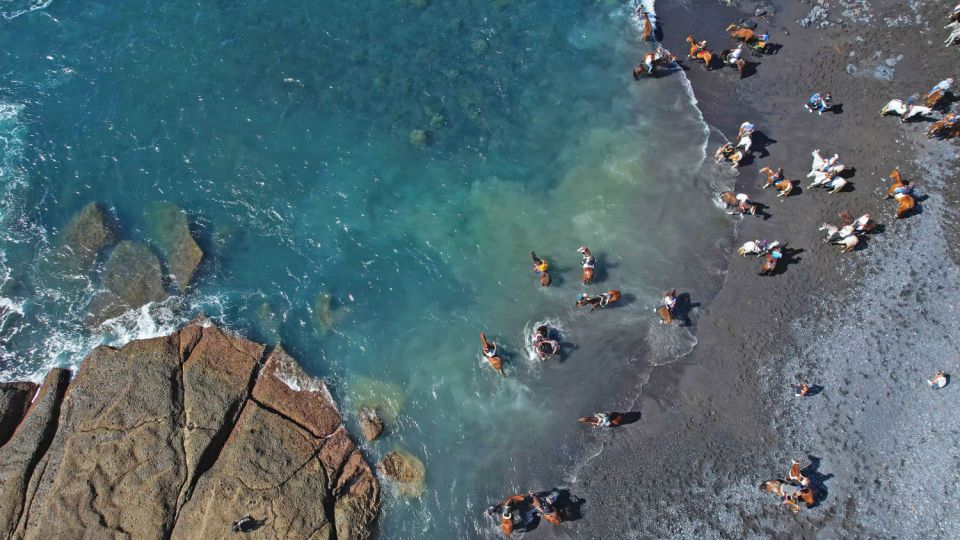Adeje Town Hall is finalising preparations for ofne of the municipality’s most significant cultural and festive events, the celebrations of the fiesta of San Sebastián. This is one of the most eagerly anticipated celebrations on the island of Tenerife, with a history that spans more than 500 years. The main event will take place on Monday, 20 January, at 12 noon in San Sebastián Church, followed by a procession to La Enramada beach. The festivities on the eve of the celebration (Sunday, 19 January) will begin at 7.30 p.m.
Those wishing to attend with animals (horses, camels, donkeys, goats, sheep, etc.) were required to pre-register at the Adeje Cultural Centre, submitting the application form along with the rider’s ID, civil liability insurance, and the animal’s vaccination card. To date more than 70 animals are already confirmed participants.
Veterinary personnel will be present on the day of the celebration to ensure animal welfare at all times. As in previous years, animals will have access to a shaded area while they wait, as well as fresh water.
Given the scale of the festivity, the Adeje Town Hall has developed a safety plan tailored to the needs of this large-scale event. Local Police, National Police, Civil Guard, Civil Protection, and Rescue services will be in attendance. A dedicated team of municipal staff will also be on hand to monitor and manage any developments throughout the event.
The celebrations will begin on the eve of Friday, 19 January, with a mass featuring music by the group ‘Mesturao.’ Following the mass, there will be a short procession with the image of San Sebastián, accompanied by the Adeje Patronal Band. At 9pm there will also be a performance by Parranda Bentahod.
On Saturday, 20 January, events will begin at 12 noon with mass accompanied by music from the group ‘Boleros de Armeñime.’ The mass will be broadcast live on Radio Sur Adeje 107.9 FM. The procession to the sea will follow, featuring a distinctive equestrian parade and the Nuestra Señora de las Nieves Group. In addition to the horse riders, attendees can enjoy the traditional romería parade, often accompanied by oxen, cows, goats, sheep, camels, dogs, and more. The event will culminate with the traditional blessing of the animals.
Origins of the festival
The San Sebastián festival dates back to the early 16th century, originating with the farmers and shepherds of Adeje and the surrounding areas who honoured their patron saint, attributed with many miracles. To this day, many people turn to San Sebastián of Adeje to seek favours or fulfil promises.
Over time, the festival has become a tradition that transcends its religious roots, fostering a sense of community among the residents of this region.
The statue of San Sebastián housed in the chapel named after him was crafted at the Bririllo workshop in Valencia and arrived in Adeje in 1916, as noted in an article published in the 'Gaceta de Tenerife' on 29 January that year.
The San Sebastián statue in Adeje is noted for its Mannerist classicism, characterised by the dynamic curves of the body and arms in the Praxitelean style. The expression on the face—a blend of pain and ecstasy—is reminiscent of Bernini’s ‘Ecstasy of Saint Teresa.’ Slightly smaller than life-size, the statue is made of carved and polychrome wood. It is celebrated for its beauty and the deep-rooted popular devotion it inspires, passed down through generations in Adeje and southern Tenerife.
The veneration of San Sebastián is closely tied to the religious history of this area: first, as a place of indigenous worship with invocations to the divine by the sea; later, as the site of the Virgin of the Incarnation’s apparition at El Humilladero, where she was worshipped until the original chapel was built. When the chapel was left without a patron, San Sebastián, the protector against epidemics and contagious diseases, became its figurehead. Such epidemics have historically affected not only people but also animals, which were vital to the area’s agricultural economy. Thus, San Sebastián became the patron saint of domestic animals, with the Chapel of the Incarnation and La Enramada beach becoming key locations for his veneration.
Due to the strong devotion the saint inspires in Adeje, residents and people from the surrounding area would pray to San Sebastián in times of illness or hardship, promising to celebrate and fund his feast in return for his intercession. According to oral tradition, the festival—initially organised by the local community—began on 19 January with a procession of the saint’s portrait through the streets of Adeje, ending on 20 January with the main celebration, during which the saint was carried in a procession to the chapel.
The tradition of carrying the statue of the saint to Adeje and then in a procession to the seaside chapel ceased in the late 1970s. Since then, the festival has been held on 19 and 20 January at La Enramada beach. Around 1993, with the disbandment of the Chamber of Agriculture, Adeje Town Hall assumed responsibility for organising the event. Today, thousands of pilgrims gather to honour the saint, many bringing their animals to be blessed, continuing the traditions of the past.
After the Mass in San Sebastián church, the procession moves to the sea, accompanied by many animals, particularly horses. As part of the tradition, riders often demonstrate their horsemanship by leading their horses into the sea.
The history of San Sebastián can be found on the Adeje Town Hall website or in the book (in Spanish) 'San Sebastián. Significado e historia para Adeje’ available in the municipality's libraries.
